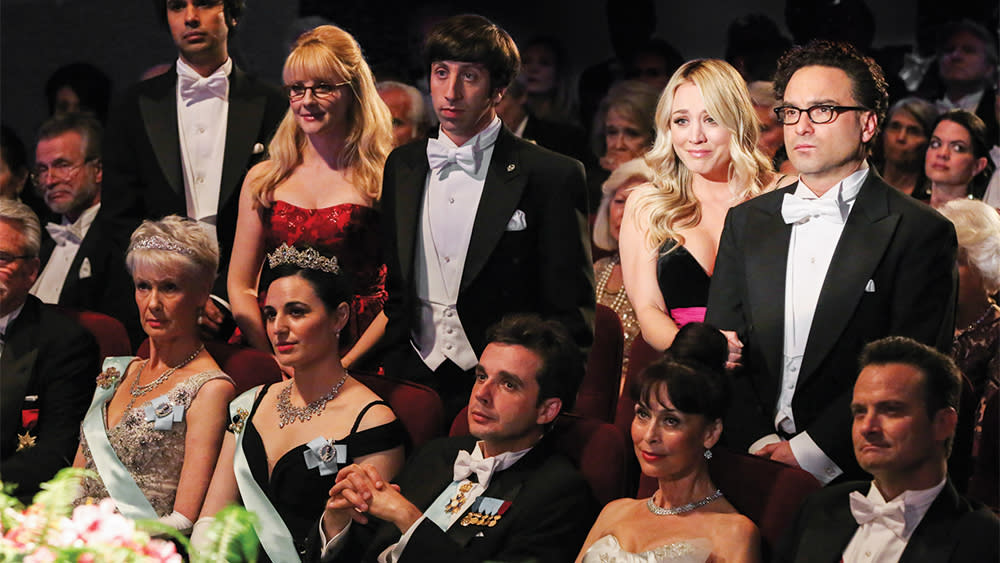Emmys: Is It Time to Give Multicams Their Own Category? (Column)

Click here to read the full article.
The question of whether multi-camera sitcoms are a dying breed isn’t a new one. The few remaining purveyors of the format, including “The Big Bang Theory” executive producer Chuck Lorre, have been asked that question for years.
But even as Lorre ventures into the single-camera world with such shows as the Golden Globe-winning “The Kominsky Method” (nominated for three Emmys, including lead and supporting actor, for Michael Douglas and Alan Arkin, respectively) and has gotten a taste of success in that arena, he’s not turning his back on multicam.
More from Variety
From 'Schitt's Creek' to 'Barry,' How Emmy-Nominated Comedies Are Aided by Auteurs
Emmys: How 'The Good Place,' 'Veep,' 'Russian Doll' Find Humor in Heightened Realities
Emmys 2019: Making the Case for 'The Marvelous Mrs. Maisel' and 'Veep' for Comedy Series
Lorre, along with Al Higgins, Eddie Gorodetsky and Gina Yashere, is behind “Bob Hearts Abishola,” a new multicam sitcom for CBS this fall that aims to balance laughs — yes, the studio audience is there, chuckling along — with the serious subject of immigration and tolerance.
Whether or not “Bob Hearts Abishola” will be awards fodder remains to be seen — there’s a fart joke within the first five minutes of the pilot, after all — but it’s heartening (pun intended) to see someone still take a stab at a form that has been mostly crowded out of primetime.
Norman Lear’s late-career surge has also played a role in getting people to talk about the power of multicam again. Gloria Calderon Kellett and Mike Royce’s new take on “One Day at a Time” (and before that, Jerrod Carmichael’s “The Carmichael Show”) began to get the biz and critics jazzed about the art of telling timely and personal stories on a stage in front of a studio audience.
Yet the multicam renaissance just hasn’t materialized. Among the 108 series submitted to the TV Academy to be considered in the comedy series category, just 13 were multicam: “The Big Bang Theory,” “The Conners,” “The Cool Kids,” “Fam,” “Last Man Standing,” “Man With a Plan,” “Mom,” “Murphy Brown,” “The Neighborhood,” “One Day at a Time,” “The Ranch,” “Rel” and “Will & Grace.” And just eight of those shows will be back for consideration next year.
Once upon a time, multi-camera sitcoms dominated the network schedules, and therefore ruled at the Emmys. But given the opportunity, TV Academy voters gravitated toward single-camera half-hours years ago, with shows including “The Wonder Years” and “Frank’s Place.”
The real shift, of course, came in the 2000s, as multicam comedies with studio audiences fell out of favor (with the exception of CBS’ lineup). The last multicam to win the comedy series Emmy was the final season of “Everybody Loves Raymond” in 2005. And the last one to even get nominated in the category was “The Big Bang Theory” in 2014.
Even though the finale of “The Big Bang Theory” was much heralded in the spring, the show’s swan song only landed three nominations, most notably in comedy directing (for Mark Cendrowski, who helmed the show’s final episode, “The Stockholm Syndrome”).
Should there be a separate category for multi-camera sitcoms, since they don’t seem to stand a chance against the more cinematic single-camera half-hours? Here’s the rub: Since there were only 13 eligible multi-camera comedies submitted for consideration this year, such a category couldn’t even exist. Per the Television Academy’s “rule of 14,” there need to be 14 or more entries in order to explore a new category; and on the flip side, if there are fewer than 14 for two consecutive years, a genre may be combined into a related category.
Here’s the thing: The TV Academy is already taking pains to try and keep some sort of multi-camera representation in the Emmy nominations. For comedy directing, the rules say that between single- and multicam, “the number of nominees will be proportional to the number of submissions in each genre, with at least one nomination for each.” That may explain how Cendrowski ended up in the mix.
There are also still a handful of categories exclusively meant for multi-camera programs, guaranteeing at least a few nominations this year for such shows as “Will & Grace,” “One Day at a Time,” “Mom” and even the canceled “Rel”: multi-camera picture editing for a comedy series and cinematography for a multi-camera series.
It’s tough out there for a multi-camera sitcom, so kudos, in particular, to the broadcast networks for taking another stab in the upcoming TV season. Besides “Bob Hearts Abishola,” ABC’s “United We Fall,” CBS’ “Carol’s Second Act,” Fox’s “Outmatched” and NBC’s “Indebted” will all hopefully find ways to get audiences to “heart” multi-camera comedy once more. Done right, it deserves to still be a part of the TV — and Emmy — conversation.
Sign up for Variety’s Newsletter. For the latest news, follow us on Facebook, Twitter, and Instagram.

